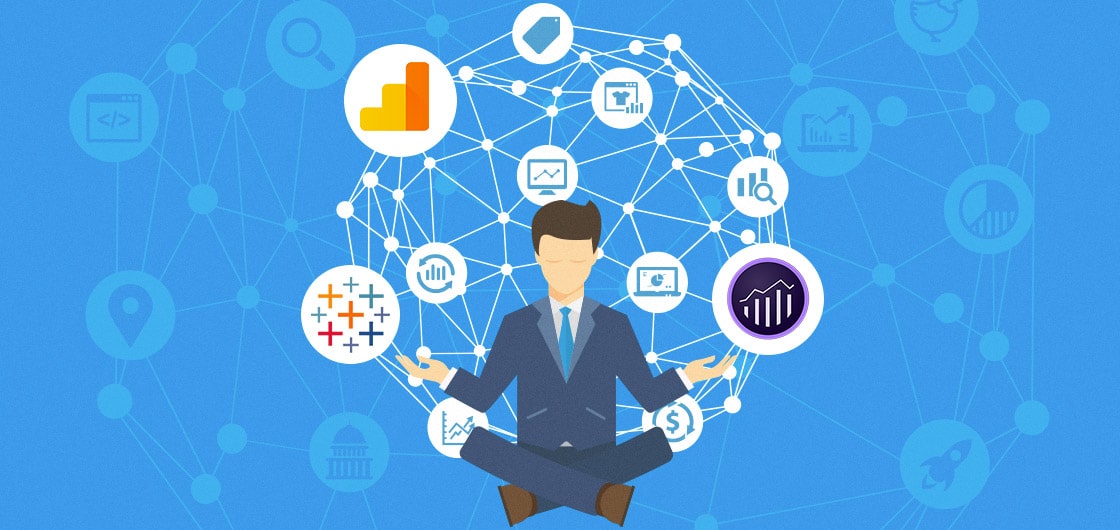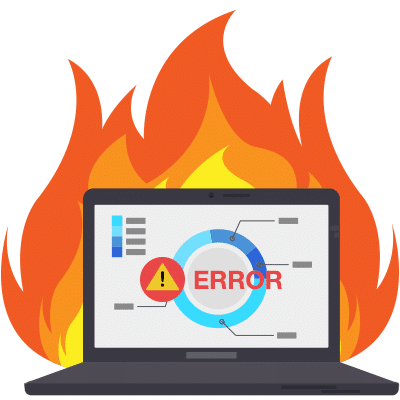Analytics Blog

Start your Self-Service Digital Analytics Transformation
The goal of self-service analytics is to empower people in your organization to answer their own questions, share insights and make data-driven decisions — accurately.
In a data-driven organization, all business users must be users of data; even though they don’t have a background in statistical analysis, business intelligence, or data mining. Training is a necessity, yet can only go so far in ensuring that business users understand the intricacies of the data they are consuming.
How does the business user know whether the data is accurate? How does the business user know if the report that they are producing is being interpreted correctly? As organizations continue to have explosive growth in both their data volume and analysis requests, we must ask these questions and more.
Self-Service Digital Analytics must be a component of a successful Data Governance plan Click & Tweet!
Benefits of Self-Service Analytics
There are several benefits of moving toward self-service analytics:
- Increase accessibility of quality and useful data throughout the organization. If you have business users asking your analysts how many visitors came to the site last month, you are doing it wrong.
- Increase accuracy of data-driven decisions and business user’s value from it (data literacy).
- Free up analysts to spend time on more impactful analysis.
According to Rita Sallam who led a Gartner report on this topic, she indicated that “by 2020, organizations that offer users access to a curated catalog of internal and external data will realize twice the business value from analytics than those that do not.”
Risks: Self-Service Analytics Tools Don’t Prevent Forest Fires

Perhaps you’ve made an investment into Google Analytics or Adobe Analytics. These self-service analytics platforms often start helping to position an organization for self-service analytics, but commonly organizations will stop here and this is a lost opportunity. You can’t stop here and release access to the wild (invite everyone in the business to access it).
Below are two such examples of significant mistakes that can be made in the aforementioned tools; both examples are relatively simple real-world mistakes we see often from our clients. More complex mistakes happen as well with inaccurate segmentation, invalid filtering, and lack of understanding what the collected data represents.
Here are a couple of concerning examples using the most popular self-service analytics platforms on the market today.
Adobe Analytics

Your business user adds the Revenue metric to the Pages report and starts reporting out or making decisions on what they believe is the Revenue derived from specific pages. Of course, what the business user doesn’t understand is that while Adobe Analytics will let you produce this report, the tool has already made a decision that might not be immediately clear to the business user around the scope and attribution of the Revenue metric.
Specifically in this example, Adobe is using linear attribution to assign the Revenue metric equally to the pages that occurred prior to the purchase event. While this behavior is true in Adobe’s ‘Reports & Analytics’ tool, they provide access to other tools such as Adobe Workspace and Adobe Data Warehouse. See the help document for more information.
Ask just about any person that has access to Adobe Analytics (even knowledgeable users that have been using the tool for years) and they won’t be able to articulate this — so it isn’t surprising that this data is being misinterpreted and used to make critical business decisions.
Here’s the data from the Adobe Analytics ‘Reports & Analytics’ tool:
Here’s the data from Adobe Analytics ‘Workspace’ tool:
Fun right? 😃
Google Analytics

Your business user creates a Custom Report that has the Page dimension along with the metric of Sessions. Seems pretty simple, right? They are probably looking to understand the number of sessions for each page. Unfortunately, this would be a large (and common) mistake.
Google Analytics will let you do this, but unless you are an experienced power user, you probably won’t understand that Sessions in this context essentially refers to only sessions that began on a given page (it is only incremented on the landing page). The correct metric to understand the number of sessions that reached a page (at any point during their session) would be Unique Pageviews. Additionally, the better metric to look at the entrances would be the Entrances metric.
Setting Up Data Governance for Self-Service Analytics
So how do we prevent mistakes like these and many others?
Training your business users is one approach, but unless the user is in the tool often (daily), they won’t gain the experience and understanding to identify and avoid these situations.
Absolutely, your analysts and expert tool users need to understand the intricacies of the tools they use day to day, but how is a typical business user going to learn and remember all of these odd situations and behaviors of a tool?
Developing a culture of intentional self-service analytics can help a wider spectrum of your business users receive access to data in a more controlled environment, and receive data that is more relevant to them. The analysts of the business need to drive the execution of this initiative.
Actionable Steps
What are the actionable steps that organizations can take to reach the nirvana of Self-Service Digital Analytics?
- Identify Resources: Do you have the right resources and the right amount to carry out the steps below in ongoing manner? Do you need to formulate a request for more resources? This is often a mixture of internal employees and external consultants. Who are your core analysts that will build curated reports and train the users on these reports/systems?
- Audit your Implementation: Both an initial and comprehensive implementation audit performed by an expert as well as ongoing (and hopefully largely automated by tools such as ObservePoint) audits. Nothing destroys trust in data like inaccurate, incomplete, and inconsistent data that could have been prevented.
- Build a Center of Excellence: Setup a wiki, such as Confluence, to build a space where you have documented the following and where users can contribute (note that a CoE contains more than this):
- Solution Design of Digital Analytics Tool: Documentation of the implementation, data layer, and setup of the tool.
- Training: Recorded video sessions and other resources that can help users independently increase their knowledge. New hires love these!
- Learnings: List the meaningful insights and actions (along with links to reports/presentations/etc). Just as important, identify what has been attempted that perhaps failed or yielded no results.
This goes against opinions I’ve heard of granting the entire organization access to self-service analytics tools, but I believe that access needs to be purposeful and controlled.
- Limit User Access to the Complete Tool(s): This goes against opinions I’ve heard of granting the entire organization access to Google Analytics/Adobe Analytics. I believe that access needs to be purposeful and controlled. In the steps below, you’ll see that we do want ‘Self-Service Digital Analytics’ so hang in there and see how we achieve this before jumping to conclusions that I’m recommending the opposite of Self-Service Analytics.
- Identify your Self-Service Digital Analytics Methods: This is discussed further below in this blog post. There are a variety of options to build out self-service analytics that provides a controlled and useful experience to business users.
- Backfill Known Report Requests: You have to start somewhere in this journey. Identify existing and current ongoing data needs.
- Develop a Process for New Data Requests: When a business user has a request for insights/data, do they know who to turn to and how to request it (tip: use JIRA).
- Understand Usage: Can you get analytics on your analytics? Whether formally through a tool that logs user access or periodic surveys of the business users, it is important to understand ongoing usage so that you can continually improve and adapt.
Self-Service Data Analytics Tools
Each organization is different in terms of budgets, resources, and objectives. Consider the below methods (and often a combination of these) to enable self-service digital analytics enhancements for your organization.
Interactive Dashboards
There are a many interactive dashboard tools available to support this method. The important aspects are that the tool is accessible, interactive, and easy to use. Below are four tool examples that we’ve setup many of our clients to better enable self-service digital analytics.
Domo

Domo is a cloud-based dashboard and data visualization platform that is built for executives. Advantages of this platform:
- Leads you into a dashboard structure that helps promote an intuitive approach to data drill-downs
- Includes Analytics on your Analytics — Easily find out if your dashboards are being used and by whom
- Provides data management to accelerate data integration (ETL)
- Infinite support of any data source
Google Data Studio

There are many advantages to Google Data Studio:
- Completely free
- Connects to a wide variety of data sources (including Google data sources such as Google Analytics, AdWords, YouTube as well as non-Google data source such as MySQL)
- Cloud-based and accessible to anyone with a browser
- Ability to control the layout and design
- Self-service date and data filtering
Adobe Analytics Workspace

This Adobe product has taken the Adobe Analytics world by storm, quickly moving long-term Ad-Hoc/Discover product users over to the web-based interface. Advantages of this tool:
- Included as part of your Adobe Analytics contract
- Advanced ‘Virtual Analyst’ tools such as Anomaly Detection , Contribution Analysis, Intelligence Alerts, and Segment Comparison
- Native support for Curated Analytics — Share your report with users and limits which dimensions, metrics, and other assets are available to the end users of the report. This curation allows for the end user to be encouraged to explore the data set in new ways but yet be restricted from using dimensions/metrics/assets that shouldn’t be mixed with this analysis.
Tableau

Tableau is a market leader in Business Intelligence and Analytics. Self-service analytics with Tableau has many advantages:
- Almost infinitely customizable data visualizations
- Increased interactivity with drill down analytics and stories/annotations
- Infinite support of any data source
- Advanced statistical tools
Automated Report Delivery
In both Google Analytics and Adobe Analytics (as well as many of the tools mentioned above), you have the option to automatically deliver ongoing reports (often via email/ftp and as either a CSV/Excel/PDF output). This gets the exact data that the business users need directly into their hands. This is great, but consider the following points and strategies to correct some of this behavior:
- Lack of interactivity: If you are sending out a PDF report that includes visualizations, how is the user going to hover over a specific day on a trended line chart to drill down into the data?
![]() Tip: Consider how the business user will use the data that is being provided. Perhaps they should instead have a calendar reminder that points them to the fully interactive report/dashboard.
Tip: Consider how the business user will use the data that is being provided. Perhaps they should instead have a calendar reminder that points them to the fully interactive report/dashboard.
- Delivery blindness: Is this report being delivered at the right frequency or too often? Did the business needs change and is this report still being delivered along with several new ones? This is a recipe for disaster as it creates blindness to all reports and prevents the business from effectively using data (missing opportunities and insights).
![]() Tip: Consider requesting a defined time-length of report delivery from the initial setup to avoid this getting out of hand quickly. Users should be encouraged to stop report delivery if their needs have changed.
Tip: Consider requesting a defined time-length of report delivery from the initial setup to avoid this getting out of hand quickly. Users should be encouraged to stop report delivery if their needs have changed.
- Inaccurate data over time – Is the report that you setup 6 months ago still accurate? You need to continually audit delivered reports to make sure that business users are not making decisions on bad data.
Self-Service Digital Analytics: Critical Piece of Your Data Governance Puzzle
An organization with a successful and mature data governance culture will not work without self-service digital analytics. It is a must for organizations that want to be truly data driven.
Without a focus and movement towards this, your organization will suffer from overloaded analysts and business users that don’t trust the data. This occurs when they either attempted to make decisions on data they are unfamiliar with, or they couldn’t even find the data so they ended up making decisions based on their gut.
Sadly, decisions not informed by data.
The good news is that your organization doesn’t have to be alone in making these organizational shifts. You can work with digital analytics consultants like us that can help you understand the current landscape and develop an achievable roadmap to help EVOLVE your organization’s self-service digital analytical capability.











